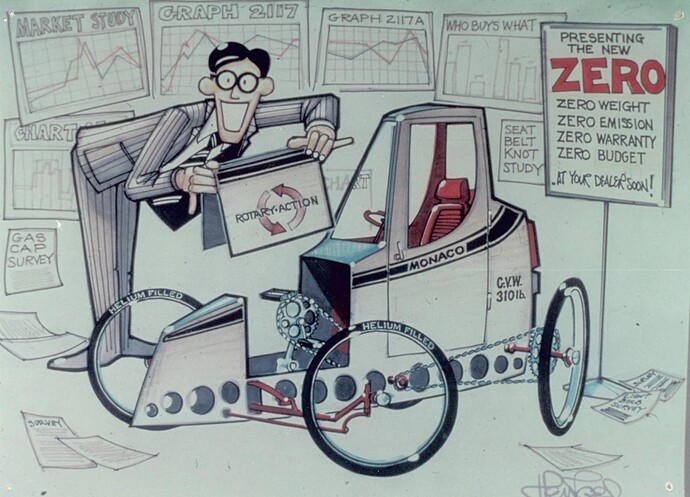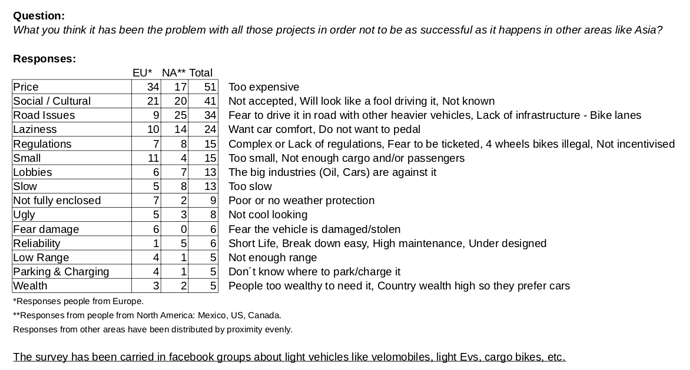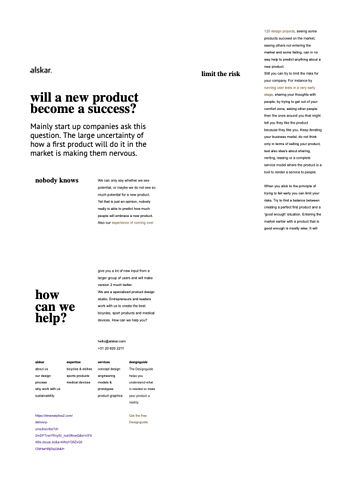Sorry mes retours seront en français (je suis resté bloqué à "Hello classe de 5ème, lesson 1, texte 1  !
!
Merci Gonzalo pour cette superbe étude, ça confirme également mon intuition et mes premiers retours. Pour l’exemple, j’ai acheté il y a 4 ans une Opel Agila 1.2 essence de 2001 (3,5x1.7x1.6 m - 955kg), 4 places carte grises, 70 000 Km pour 2400€ . La plupart des vélos cargo sont vendus aux alentours de 3000€ en VAE et les véhicules intermédiaires commercialisés de notre sujet aux alentours de 6000€.
Je pense que nous souffrons du syndrome de l’ingénieur, sans vouloir blesser personne, et plus particulièrement de l’ingénieur automobile… avec les mêmes reflexes du toujours plus,( tjs+ gros, rapide, léger, facile, assisté, aérodynamique…) … la technique n’est pas un problème,… on a besoin de répondre a une problématique spécifique, alors on développe une pièce spécifique, on utilise les mêmes matériaux, et les mêmes process que l’industrie automobile, donc forcement pour les petites et moyennes séries, les coûts de fabrications sont élevés, sans oublier les impacts environnementaux et sociaux de nos dépendances aux chaines de productions planétaires.
Une voiture c’est +/-30 000 pièces, un vélo +/- 1000 pièces (en comptant les billes de roulements, les rondelles…et sans compter les apprêts, peintures, solvants, graisses, huiles…) et donc autant d’usines dédiées.
Pourquoi avoir besoin de toujours plus se compliquer la vie avec des choses sur mesure, quand 1 vélo acier des années 90 (avec ces technologies d’époque) suffit largement à transporter 120 kg max., et que la 2 CV des années 50 répond à nos problématiques (excepté l’énergie fossile consommée). Cette course à l’échalotte marketing conduit les fabricants du cycles et de l’automobile à toujours créer de nouvelles techno, et/ou services superflus… Avons nous réellement besoin de tout ce « confort » (Cf. Le confort tue ;)? Pourquoi les véhicules intermédiaires veulent-ils à tout prix ressembler à des bagnoles?
Je pense que si nous n’arrivons pas à sortir un véhicule pouvant transporter 4 personnes sommairement dans un budget en dessous de 2500 €, nos efforts sont vains pour convaincre. Il y aura cependant toujours un marché de niche de convaincus et/ou de middle class aisée pour s’offrir ces bijoux/joujoux technologiques. A l’heure des crises à répétitions, les collapso ont-ils raison? Doit-on continuer, en reproduisant toujours et toujours les mêmes schémas? Je penses que si on veux convaincre et convertir massivement, il va falloir repenser nos méthodologies de conceptions en s’orientant vers les low-tech, les matériaux bio-sourcés, le surcyclage… et ce que j’appelle l’ingéniosité paysanne de nos grands parents capable de bricoler, créer, réparer n’importe quoi avec presque rien.




 !
! )
)
